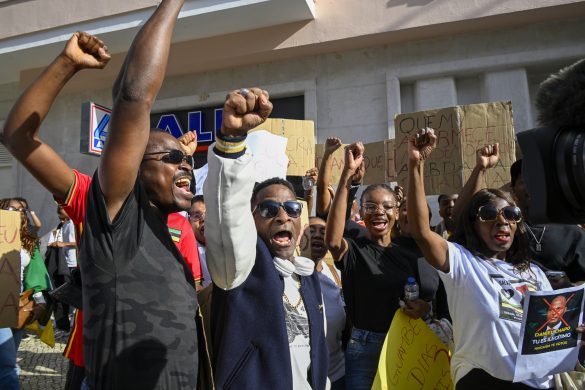„Operation Lifeline Sudan‟ fra 1989 til 2005 blev kaldt „den største samordnede humanitære aktion nogensinde‟ – hvad har det humanitære kavalleri lært af den? Analyse fra FN-nyhedsbureau med baggrund i Sydsudans elendighed lige nu.
JUBA, 14 November 2014 (IRIN):- When Operation Lifeline Sudan (OLS) began 25 years ago, it sought to extend a helping hand to the millions in need and caught up in the second Sudanese civil war (1989-2005).
Today, the international community is grappling with a costly South Sudan crisis. In the past 10 months, thousands of people have died, many more have been injured.
At least 1.4 million South Sudanese have fled their homes, with about 469,000 crossing into neighbouring Ethiopia, Kenya, Sudan and Uganda.
A large-scale humanitarian operation is under way with the aid community seeking 1.8 billion US dollar (10,5 milliarder DKR) in 2014.
IRIN looks at lessons that can, or have already been, learned from the OLS experience.
Coordinate, coordinate
Operation Lifeline Sudan (OLS) was the largest-ever coordinated humanitarian effort that “allowed the participation of donors and NGOs who were either unable or unwilling to mount relief efforts on their own or under other auspices”, notes a report by the Secure Livelihoods Research Consortium (SLRC).
According to the report, cooperation among NGOs was a “product of OLS in general and the ground rules negotiations in particular.”
Coordination remains critical in the aid response. The UN Office for the Coordination of Humanitarian Affairs (OCHA) is tasked with the responsibility “bringing together humanitarian actors to ensure a coherent response to emergencies”.
The OLS ground rules called for “humanitarian assistance to populations in need, regardless of affiliation,” said Dan Maxwell, a professor at Tufts University and the SLRC’s team leader.
The UN and aid agencies would negotiate with the warring parties for access to deliver food and other relief.
While OLS would come in for consistent criticism – from both the international community and the protagonists, OLS operated for about 16 years, ending in 2005 after the signing of the Comprehensive Peace Agreement (CPA).
Engage with all parties to tackle security and access constraints
As in the OLS period, logistical, political and security constraints are plaguing today’s relief effort in South Sudan.
Access by road has remained challenging during the rains, forcing aid agencies to rely heavily on increasingly expensive air assets.
According to some aid workers, it was cheaper during OLS to use air assets, as relief items were flown from staging areas in neighbouring Ethiopia, Kenya and Uganda.
At present, most aid is flown in from Juba, which is far from crisis-affected areas. Cross-border deliveries to South Sudan from Sudan have recently begun.
South Sudan ranks third in the world after Afghanistan and Syria in terms of insecurity for aid workers.
According to OCHA, 74 access incidents were reported in September (compared to 58 in August) mainly involving “violence against personnel/assets with several incidents of assault, harassment (chikane) and ambush/hijackings especially in Central Equatoria, and arrest/detention and threats in Unity and Jonglei”.
In August, a UN helicopter was shot down in the outskirts of Bentiu, in Unity State.
In South Sudan, the Humanitarian Country Team comprises the UN, the International Organization for Migration, international NGOs and Red Cross/Red Crescent Movement representatives. The team “extensively engages with all parties to the conflict to inform [them] of the impact of access constraints on humanitarian programmes,” notes an OCHA access snapshot.
“OCHA’s access team – engages with all parties to the conflict to overcome constraints and facilitate access including assurances for flights and convoys,” it adds.
Negotiate with conflict parties to avoid misunderstandings
Læs videre på
http://www.irinnews.org/report/100837/any-lessons-from-operation-lifeline-sudan














